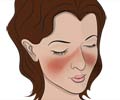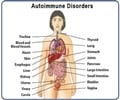Researchers have found that a very old drug that has till date been used to treat leprosy may also be effective in treating several autoimmune diseases like multiple sclerosis.
Researchers have found that a very old drug that has till date been used to treat leprosy may also be effective in treating several autoimmune diseases like multiple sclerosis.
The old drug called clofazimine, made in the 1890s originally failed to treat tuberculosis but has worked well as an anti-leprosy medicine."We never expected that an old antibiotic would hit this target that has been implicated in multiple sclerosis, psoriasis and type 1 diabetes," said Johns Hopkins pharmacologist Jun O. Liu.
"People have been working for years and spending tens of millions of dollars on developing a drug to inhibit a specific molecular target involved in these diseases, and here, we have a safe, known drug that hits that target," known as the Kv1.3 potassium channel,” Liu added.
Johns Hopkins scientists discovered that clofazimine interferes with a molecular pathway important in orchestrating the human body’s immune response.
"Until now, clofazimine's presumed target was not human cells, but bacteria. But we discovered the drug has a tremendous effect on human immune cells that are heavily involved in both the initiation and execution of an effective immune response," Liu said.
Liu said that one of the key steps involved in turning on the immune response is the prolonged accumulation of calcium inside of immune cells.
Advertisement
However, when they pre-treated the immune cells with clofazimine, the calcium rush was much less and it didn’t hang around as long.
Advertisement
Liu said: "This let us conclude that clofazimine was blocking the calcium influx into the immune cells.
"Without enough calcium getting inside a cell, the signalling pathway that turns on the immune response was short-circuited."
The combined effect is to shut down a signaling pathway involved in autoimmune disease.
The study is reported in Public Library of Science (PLoS One).
Source-ANI
TAN/L















